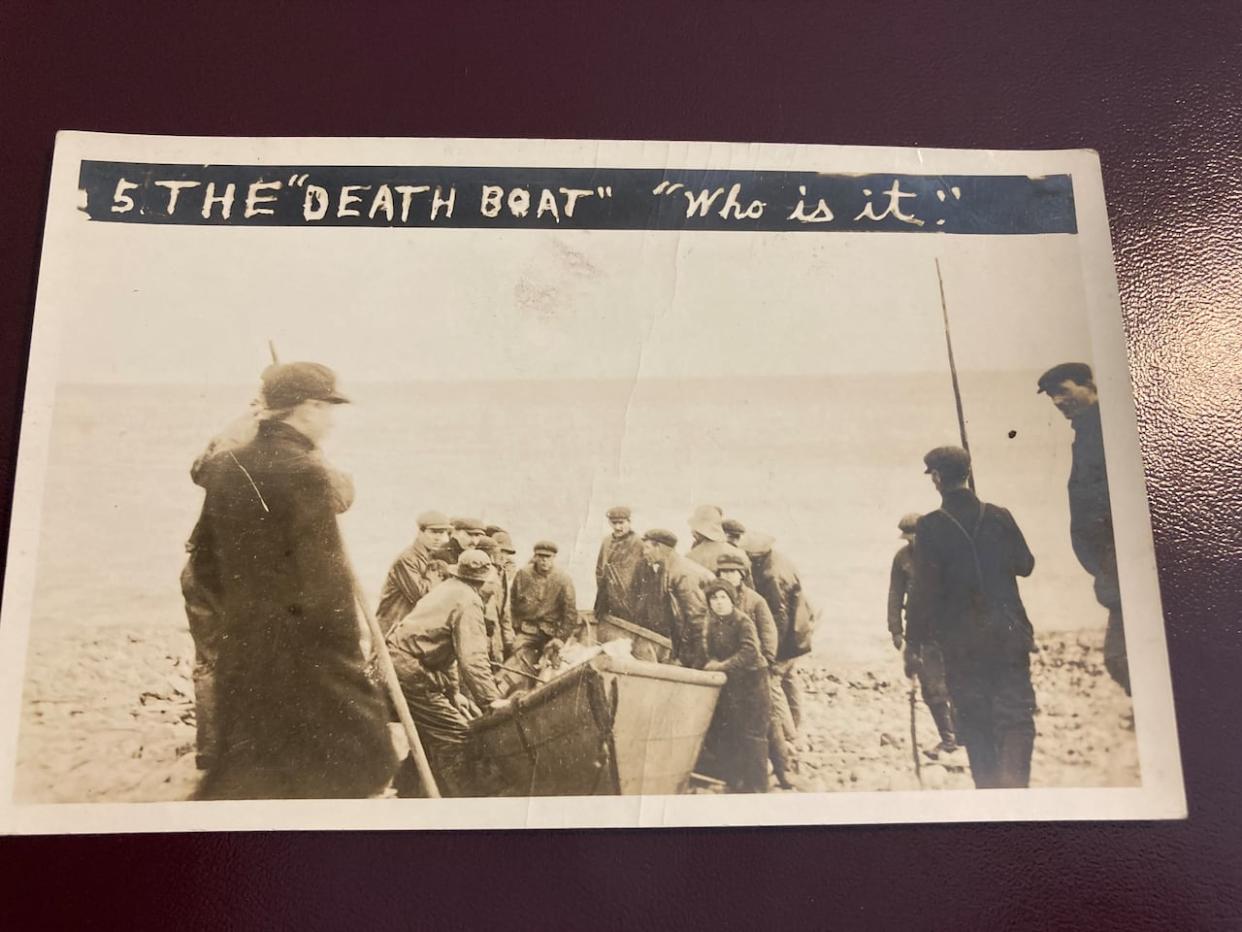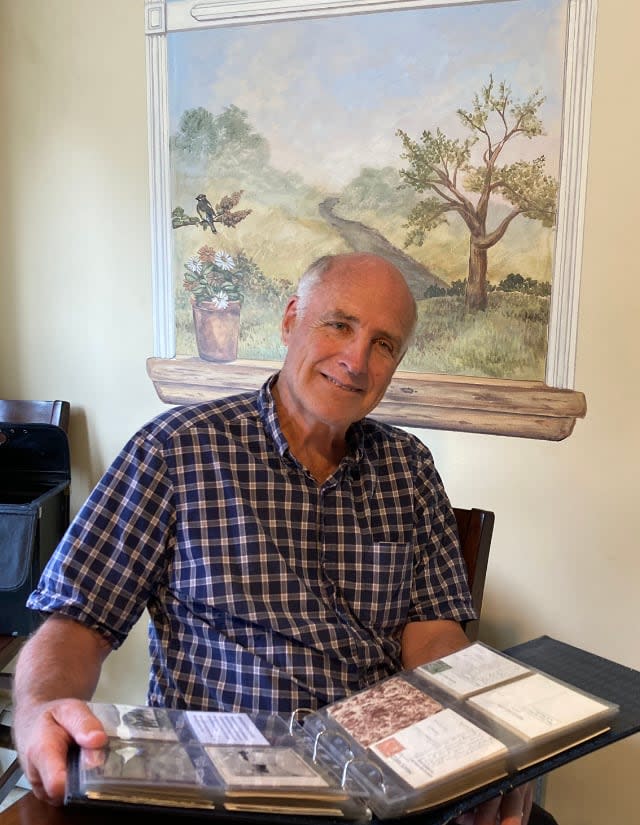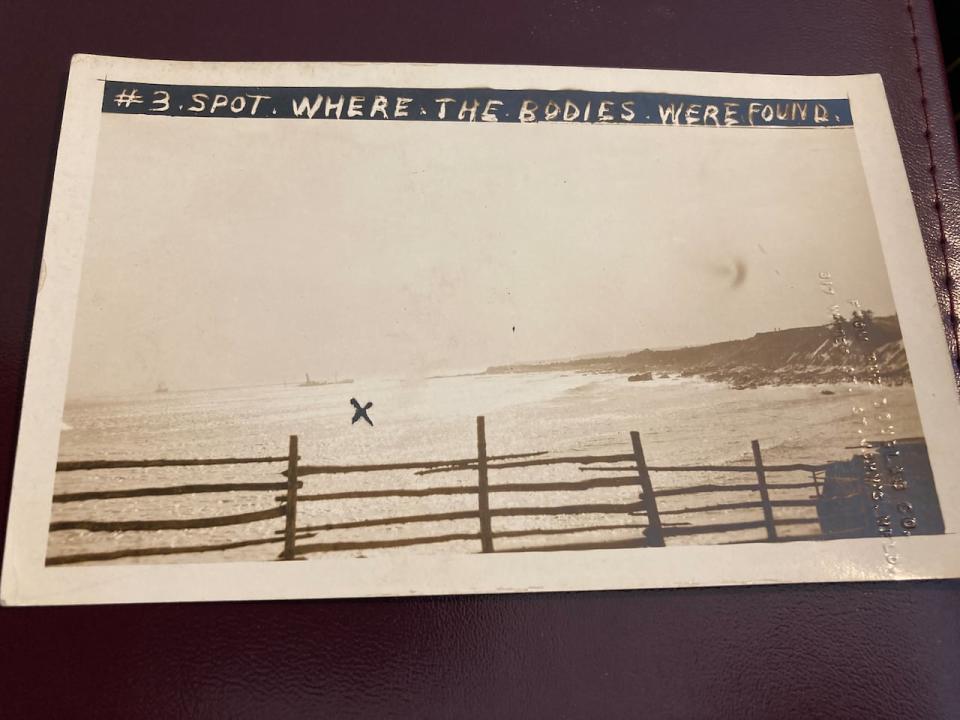Postcards once featured disasters and macabre pictures. Customers snapped them up


The Death Boat postcard depicts the bodies of people who drowned after the sinking of the SS Florizel in 1918 off southern Newfoundland. (Mariam Mesbah/CBC)
When one thinks of the classic pictures on a postcard, what typically comes to mind is a peaceful scene of ocean cliffs or vast green hills.
You likely wouldn't think of an image in which the bodies of drowned men can be seen, or the aftermath of a city levelled by an explosion.
However, these "disaster postcards" existed, and they were a popular way for people to communicate about local tragedies with others.
One example captures the destruction of the explosion that devastated Halifax in 1917. Two ships collided, one of them — a military vessel — carrying chemical explosives at its cargo. The Halifax Explosion resulted in more than 1,900 deaths and the destruction of buildings in a wide radius.
"That was a significant historical event in the city," says Amy Lemoine, a librarian at the Halifax Public Library. "People bought these cards and sent them to their family or friends."
Generations before social media made it easy for news of disasters to travel long distances, postcards often contained real-life events, however horrible.
At the time, people purchased them to share the news.
These days, people like Brian Bursey collect them.
"I think because I'm old myself, I like old stuff," he said with a laugh. He started collecting stamps and then expanded his passion to include postcards.

Brian Bursey holds one of the 50 volumes that store his collection, which consists of about 5,000 postcards. He says he started collecting 15 years ago and is still adding to it. (Mariam Mesbah/CBC)
Bursey, who lives in Middle Cove just outside St. John's, is a deltiologist, or a postcard collector. His collection of postcards is neatly tucked into 50 leather-bound volumes. He said he has 5,000 cards and many date back to before 1949, the year Newfoundland joined Confederation.
One postcard features a picture of a boat, although the details are grim. Inside the boat are bodies of people who recently drowned. The postcard reflects morbid curiosity, as it also shows people surrounding the boat to see inside.
The postcard is one of a series depicting the aftermath of the sinking of the SS Florizel in 1918. A passenger liner, the Florizel hit a reef and sank near the town of Cappahayden, N.L.
Another postcard from that day features a picture of the shore with an X marking the location where bodies had been recovered.The title of the postcard reads, "Spot Where the Bodies Were Found."
When he's on the hunt for new postcards, Bursey says, whether in an antique shop or more often on eBay, he seeks out ones that are "a bit unusual."

In another of Bursey's postcards about the SS Florizel disaster, an X marks where the bodies of the drowned were found. (Mariam Mesbah/CBC)
He said postcards hold significance not only because of how they portray a historical moment but also because they tell a story about the people of an era.
"For example you see a postcard of a dog or a goat towing a cart, or someone tending sheep, that's poverty there," Bursey said.
"Sometimes postcards reveal quite a lot about the social and economic conditions of the time."
Download our free CBC News app to sign up for push alerts for CBC Newfoundland and Labrador. Click here to visit our landing page.


